




 |
|
|||||||||||||||||||||
 |
|
|
|
|
|
|
|
|
|
|||||||||||||
|
|
|
|
|
|
||||||||||||||||||
|
|
|
|
|
|
|
|
|
|
||||||||||||||
|
|
|
|
|
|
||||||||||||||||||
|
|
|
|
|
|
|
|
|
|
||||||||||||||
|
|
|
|
|
|
||||||||||||||||||
|
|
|
|
|
|
|
 |
|
|||||||||||||||
 |
 |
|
||||||||||||||||||||
|
|
|
|
||||||||||||||||||||
|
|
|
|
|
|
|
|
|
|
|
|
|
|
|
|
|
|
|
|
|
|
|
|

| Raising Mealworms - The Easy Way | ||||||
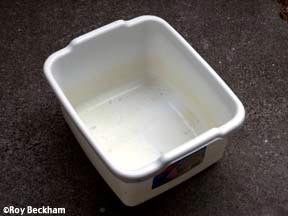 |
 |
|||||
| Start with a plastic or metal container. Smooth straight sides to keep the worms and beetles in. I use a large plastic dish pan. Nothing special. | Fill the pan with a couple of inches of Chick Crumbles or some other high protein poultry meal. Don't fill it to the top. You'll need the room as time goes by. | |||||
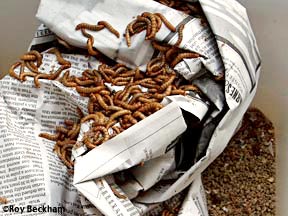 |
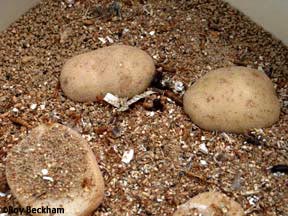 |
|||||
| If you're starting a new colony or just need to increase the size of an old one, add in your new worms now. Here some new mail-order worms are unpacked. They're shipped in crumpled paper. | Place some moisture food on top such as potato, banana peels, carrot slices or apple. Put in the worms, beetles, pupae and any dried up vegetable remains from a previous colony on top as it may contain eggs. | |||||
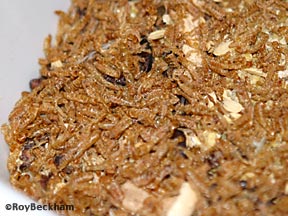 |
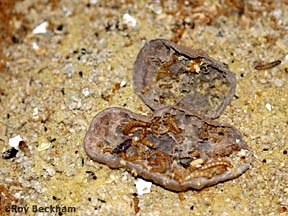 |
|||||
| As the mealworms grow and shed their exoskeleton, they will leave behind a paper-like hull. These can easily be blown away. | To maintain the colony, just add some more poultry crumbles on top as well as adding more moisture food every now and again. Eventually it will fill up with a sand-like substance (mealworm poop) and it's time to start a new colony. Here they have just about finished some of the potato added earlier. | |||||
|
Tips: Adult beetles can fly. To keep them from leaving the culture, use a screen top. While I have no evidence that the antibiotics are transferable from feed to the worms, why take the chance. Use a poultry feed that does not contain antibiotics commonly used in many chick starters. The growth rate of the worms is dependent on the temperature. Warmer weather results in a faster growth rate. Cooler weather retards their growth. Rotate several colonies at different stages of development and you'll have a steady supply of worms You'll usually find plenty of worms under the moisture food on the top of the crumbles. Birds often find the freshly molted worms (white color) easier to eat since they do not yet have a hard exterior. Some birds also like the pupae and they have the advantage of not being able to crawl away. |
||||||
 |
||||||

| Rainbow Mealworms - California |
| Sunshine Mealworms - Oregon |
| Russell's Cricket Farm - Georgia |
| New York Worms - New York |
| Grubco - Ohio |
